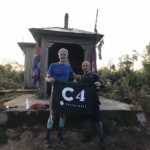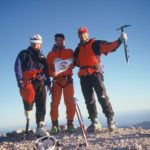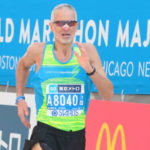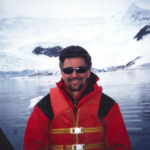

Trip Report #6 – 9 Races, 7 Years, 6 Age-Group Wins: Running the Abbott World Marathon Majors
While I was following my goal to run a marathon on each of the seven continents, my wife Deb started running marathons as well. Deb decided that she wanted to qualify for, and run, the Boston Marathon. At the time, that didn’t sound interesting to me at all. She ran Boston in 2009, with a friend, and I stayed home.
When she came back from Boston, Deb changed tactics. She told me about the Marathon Majors—Boston, New York, Chicago, London, and Berlin—and said that her new goal was to run these five races. Specifically, she started trying to get me interested in running the Berlin Marathon, knowing that I had traveled extensively through Germany but had never been to Berlin. It was a flat, fast course, she said, unlike Boston. I would be 50 the following year; maybe I could run a marathon PR at age 50 in Berlin?
I started to give the matter some thought.
I committed to running the 2010 Berlin Marathon, and we both registered. As part of my training, I started to make some adjustments to my running. I changed my running mechanics from being a heel striker to a midfoot-striker, switching my shoes to facilitate that change. I also started to focus on dropping weight. These changes made a big difference in my training for Berlin. I averaged between 125 and 140 miles a week for three months, but I was much less sore than I had been previously, even when I’d been running lower mileage.
When I got to Berlin, I was ready. We had a few days of sightseeing (in the rain) leading up to the race. On race morning, it was still raining, and it rained for the entire race. There was nothing I could do about the weather, so after the first couple of miles, I just relaxed and ignored it. The course was as flat as I had hoped, and I ran well. I ran a 2:37:03, and surprisingly won my age-group (which, at the time, was Men’s 50-54.) I was hooked.
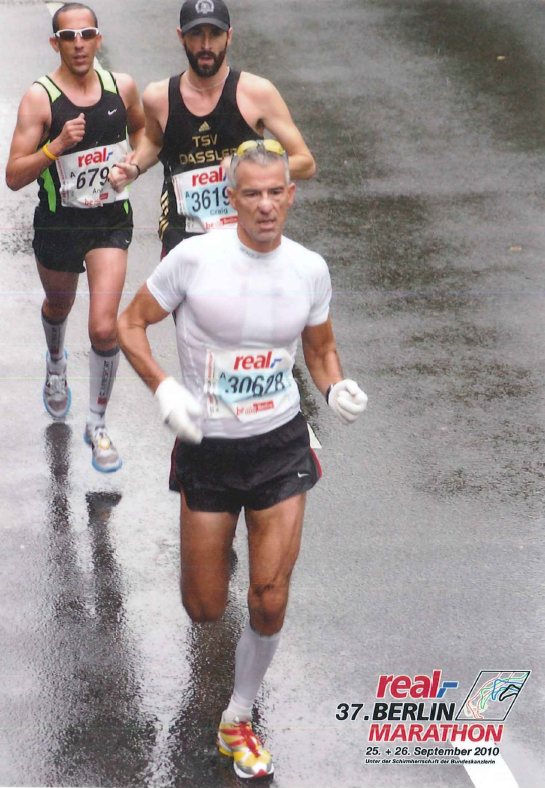
Actually, I’m still hooked. I haven’t really slowed down since Berlin.
Eating a pretzel after the race, I told Deb that my new goal was to run all 5 Marathon Majors. She was psyched; we were going back to Boston.
We went to Boston in 2011. Boston is a much hillier course than Berlin, so I adjusted my training accordingly. I ran more downhills and did my treadmill workouts with a downhill grade. I averaged 140 to 150 miles per week for 3 months. With the hills on the course, I didn’t expect to run a fast time; I was focused on trying to win my age-group. As it turned out, I ran a personal record that day: a 2:34:46. And I did win my age-group. The awards ceremony after the race was fun, and it was cool to stand next to, and meet, Joan Benoit-Samuelson, who had won the Women’s 50-54s.
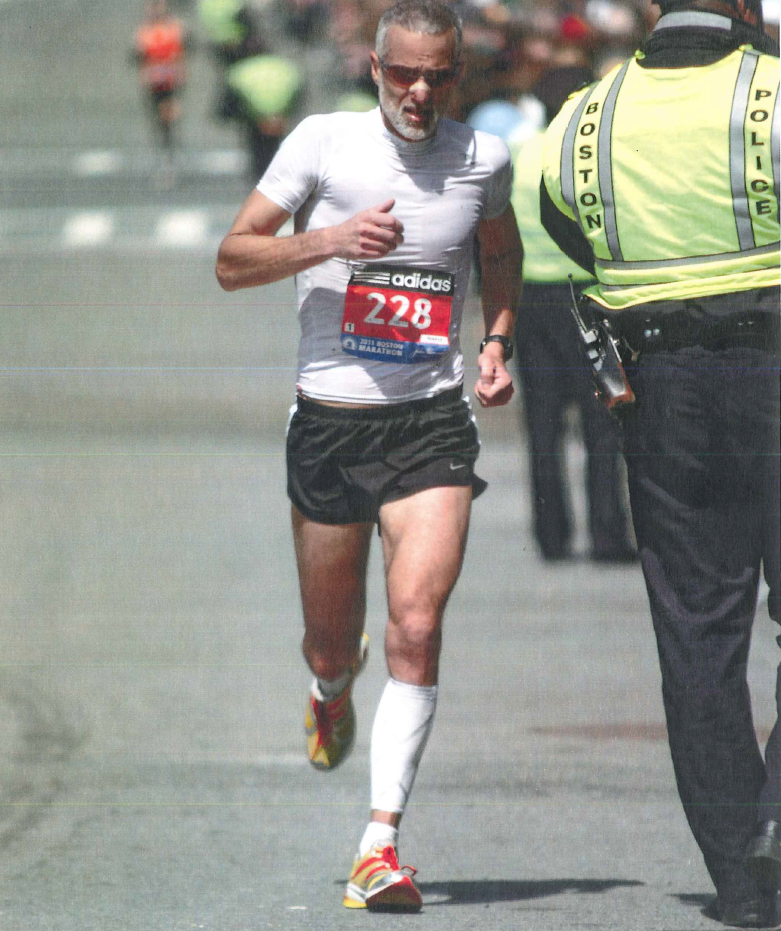
The next stop was New York. That was a tough race. Although my training for New York was similar to my training for Boston, I wasn’t feeling 100% on race day. I had an injury on the bottom of my right foot, and while I was able to run well for the first 10K, the rest of the race was not good. I finished in 14th place in my age group, with one of my slowest times ever: a 2:50:44. I knew I could do better, and I wasn’t happy with my time or my place. In the back of my head, I thought that someday I’d like to go back for another shot at it. Not right away though, because I was already committed to run London in April of 2012 and Chicago that fall.
London, like Berlin, is a flat course, so I adjusted my training. I focused on turnover and flat training runs, running 140 to150 miles per week for 3 months. I ran decently, and I was 3rd in my age group with a 2:37:35. That took some of the sting out of my New York race, but I knew I could do better. I was going to figure some things out and make some changes in the 6 months between London and Chicago.
I got my foot completely healed and added more speed work to my training. Chicago is a flat course, so I continued training fast and flat, focusing on turnover. I dropped a few more pounds, too. I was healthy, I was well trained, and I was incredibly focused mentally. I wanted to run fast, and I wanted that age-group win. I was able to accomplish both. I won my age-group with a 2:35:10, and was 5th Masters overall. I was happy.
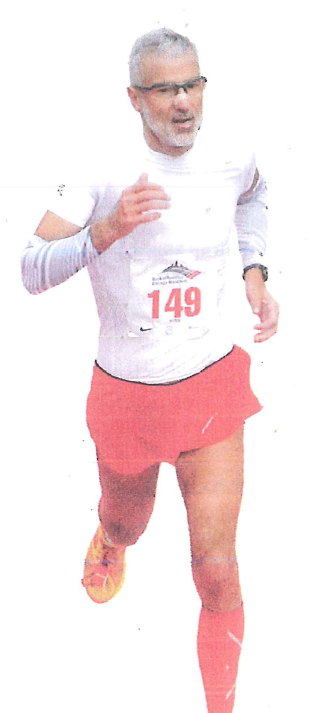
The Marathon Majors had been a worthwhile goal. I had actually enjoyed being part of the large fields (with more than 40,000 runners) and the excitement that the Majors conjured up. I had challenged myself, facing the challenges that the individual courses had offered, while maintaining a high level of training and mileage from 2010 to 2012. I had picked up 3 out of 5 age-group wins, and been on the podium 4 out of 5 times, facing some of the toughest age-group competitors at the marathon distance in the world. I was ready for some shorter distances, and at this point, I started running more half marathons.
In February of 2013, Deb and I were watching coverage of the Tokyo Marathon on TV. The commentators casually mentioned that Tokyo had recently been added to Berlin, London, New York, Boston and Chicago to form what was now being called The Abbott World Marathon Majors.
I looked at Deb.
Deb looked at me.
Deb started laughing uncontrollably. When I asked her why she was laughing, she just said, “I’m going to Tokyo.” I said, “That can’t be right. They can’t just add a race. There were 5. I ran 5.” Again she said, “We’re going to Tokyo.” I was still unconvinced, so I said, “Google it.” She did. The Tokyo Marathon had, in fact, been made one of the Majors. We were going to Tokyo.
I had a lot of time to get ready for Tokyo since it wasn’t following on the heels of another marathon. I did my standard 3 months of training, averaging between 160 and 170 miles a week, focusing on running flat and fast. One week, just for the heck of it, I ran 200 miles. I dropped a couple more pounds.
Tokyo is not like the other Abbott World Marathon Majors. In 2014, faster runners were not seeded in the front of the race, the way they are elsewhere. The elites were on the start line. Then they were followed by the Japanese Athletics Federation in the next corral. There are no time requirements to be in this corral, and in addition to faster Japanese runners, it is also the starting corral for many people dressed in costumes, and other, slower runners. I was behind them.
This was bad. It was very frustrating to zigzag through runners dressed as Minnie Mouse, runners holding hands, and runners who stopped and stood still to take pictures. This went on for the first 5K of the race. I know I wasted some significant energy there. The other consequences of this chaotic start became apparent later, when we learned that the official race results are based on gun time, not chip time.
Another difference between Tokyo and the other Abbott World Marathon Majors is the availability of race results. All of the other races post results online by the end of race day. For Tokyo, only our gun time was available. No age-group or other place information. We had the concierge at our hotel call the race office after a few days, to see if we could get official results; we were told that race results would be sent to us by mail. So, with not much choice in the matter, we waited.
We waited over a month. Finally, our certificates arrived in the mail. My official finish time was 2:41:29. My net time (listed separately on the certificate) was 2:40:35. My place was 2nd in my age-group. I went online to see how far in front of me the 1st place finisher was, and how far behind me the 3rd place finisher was, but nothing was online. To this day, I don’t know who beat me, and by how much time, or where he started. I also don’t know whether his net time was slower or faster than mine.
No matter; I had achieved my (revised) goal. I had run all 6 of the Abbott World Marathon Majors. I had won my age-group in 3, and been on the podium for 5 of the 6. I was ready to cross the Abbott World Marathon Majors off my list.
By 2015, my son Ian had started college at Columbia University in New York. Deb wanted to go visit and decided to remind me that I had unfinished business there. I had turned 55 in May. With 3 out of 6 age-group wins in Men’s 50-54, she reasoned, why not try to win the other 3 in Men’s 55-59? While part of me suspected that she was just looking for a family vacation in New York City, part of me liked the idea. I knew I could do better in New York. I was healthy. I was running well. I was at the bottom of a new age-group. My mom and sister said they would come to cheer me on, my kid was in New York, my wife wanted to go, and I wanted to kick off my new age-group with a big win.
The race was a lot better than the one in 2011 had been. Hearing my family cheering for me along the course was amazing. Deb and Ian were waiting for me on 5th Avenue at the entrance to Central Park; they had the cops running security detail yell “ZALOKAR!” for me as I went by. By this time, I was sponsored by Skechers Performance, so I was wearing a singlet that said “Skechers”, and strangers were yelling “Go Skechers Guy!” I ran a 2:43:10, and won my age-group. At dinner that night, I announced my new goal to my family: I was going to win my age-group in all 6 Abbott World Marathon Majors, 4 down, 2 to go. Somehow, nobody was surprised.

When I got home, I started researching to see if anyone had won their age-group in all 6 races. It didn’t appear that anyone had. That made the goal even more enticing. Could I be the first person to do it?
I had London and Tokyo to choose from. I’d had a much better race experience in London, and Deb hadn’t run London in 2012 when I did, so she was excited to go and get her 6-Star Finisher status at the Abbott World Marathon Majors. London, 2016: we had a plan. I was healthy and able to put in 3 months of good high mileage training before the race. I felt strong during the race, was familiar with the course and was focused on that age-group win. I got it, running a 2:39:50, 5 out of 6.

Only Tokyo stood between me and my goal. I was a little apprehensive about running Tokyo again, because of the (in my opinion) poorly managed start, and also because I felt that the official results being based on gun time, rather than chip time, did not work in my favor. But, I was 5 for 6, and Tokyo was number 6. There was no getting around it. Fortunately, in the 3 years since I had run the race, Tokyo had slightly restructured their start line and corral set up. With a qualifying time, I was able to apply for an Overseas Semi-Elite position, which would put me in a corral directly behind the elite runners. I applied and got the position. I was cautiously optimistic. On race day, my position was exactly as I had been told it would be, which was really important because the race still used the gun time for their race results.
The race wasn’t easy, but I stayed focused on my splits, and they were OK. I wanted to win my age-group. I wanted to be done. At this point, I didn’t want to run this race again. With about a mile and a half to go, I tucked in behind an elite woman and decided no one was going to pass me. She and I passed at least a dozen runners in that last stretch. I finished the race in 2:45:42 (chip time), only 6 seconds off my official race time of 2:45:48. I was so happy to have had that Semi-Elite starting position! Now, the only thing to do was wait to find out the age-group standings.
And we waited. Just like 2014, there was no placement information online, just my time and splits. Just for the heck of it, I sent an e-mail to the race and had the concierge call, but in both cases, we were told that no age-group place information was available. I really don’t understand the delay, but there was nothing to do but wait.
By the time we got home, there was still no information available. A day didn’t go by without multiple people asking Deb and me how I had done, and whether I had gotten that 6th win. We all waited. Eleven days later, official race results were posted online. I had won my age-group. YIPPEE-KI-YAY!! I won by less than a minute. Both 2nd and 3rd place in my age-group were Semi-Elite Japanese runners. Thank goodness I had the Overseas Semi-Elite entry. I e-mailed the race to ask about age-group awards. They e-mailed me back and said they didn’t give age-group awards, which is another way that Tokyo is different from the other 5 races.
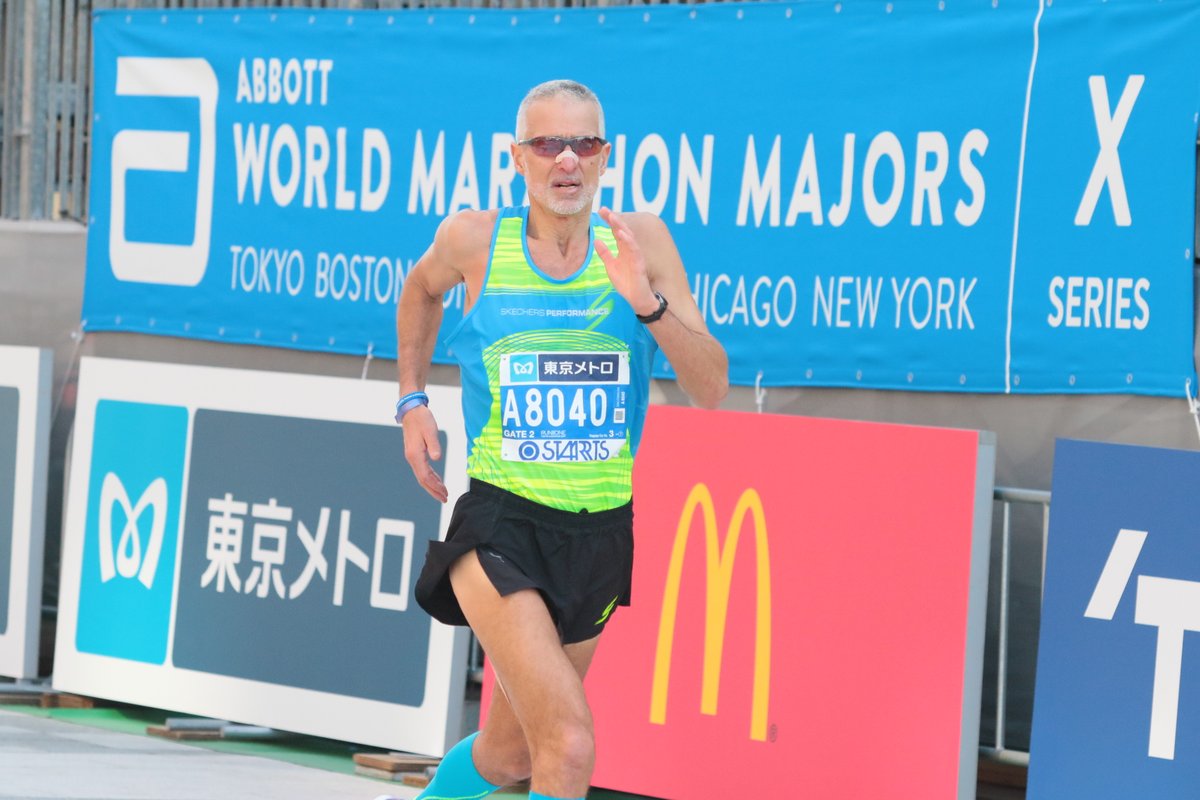
Running all 6 Abbott World Marathon Majors and earning 6-Star Finisher status is a huge accomplishment. Winning my age-group in all 6 took a lot of hard work, and was exciting and challenging. Being the first to accomplish this Abbott World Marathon Majors Age-Group Sweep makes it even better.
Since Tokyo, I have been racing shorter distances, and my average weekly mileage is about 105 to 115. My next marathon is in April 2018, in Paris. I’ll turn 60 in 2020… that might be the time to revisit the Abbott World Marathon Majors circuit? Or maybe they’ll add another one? I wouldn’t mind running a marathon in Sydney…

